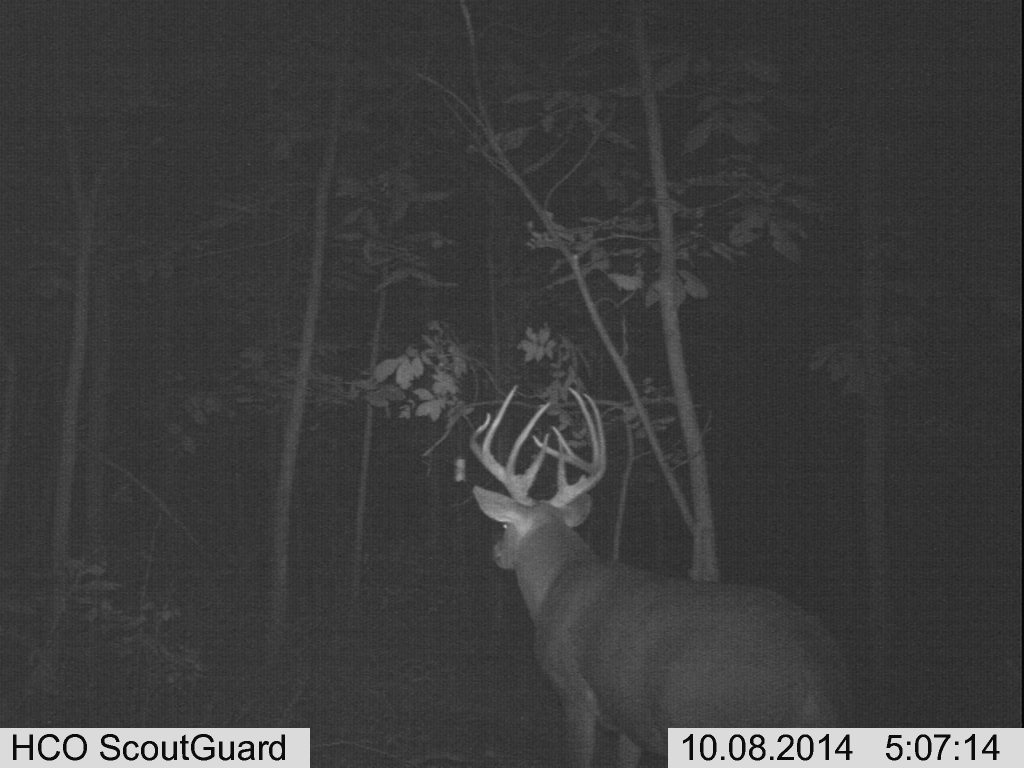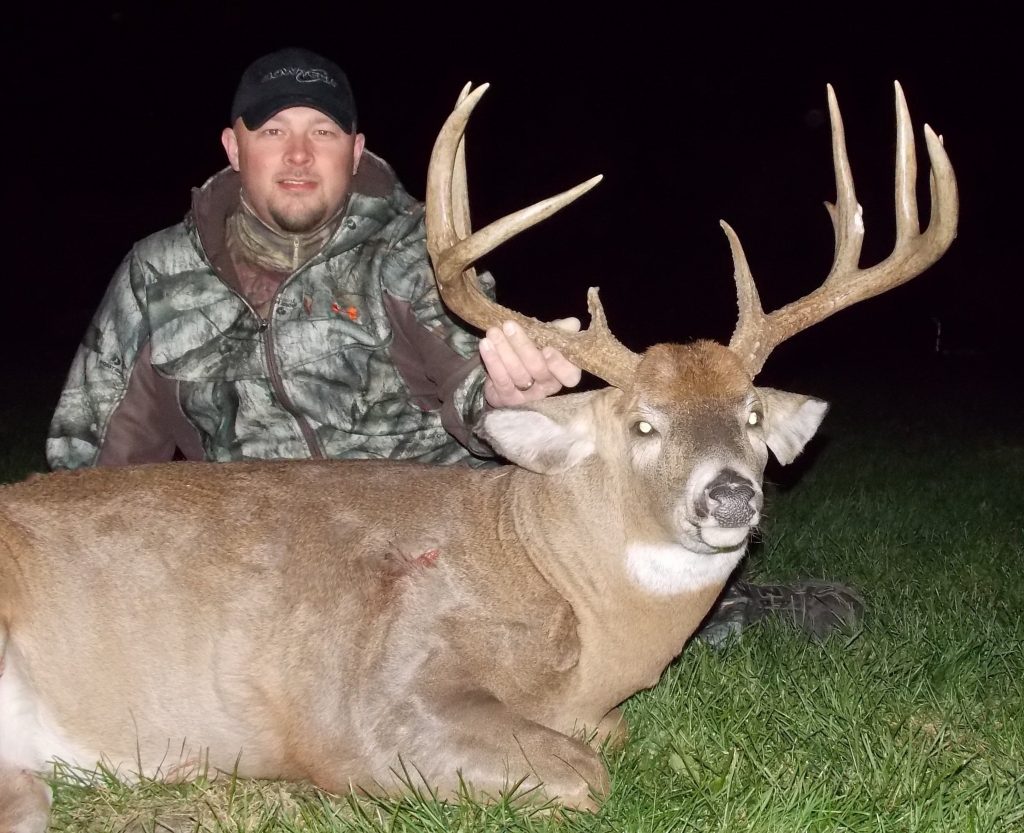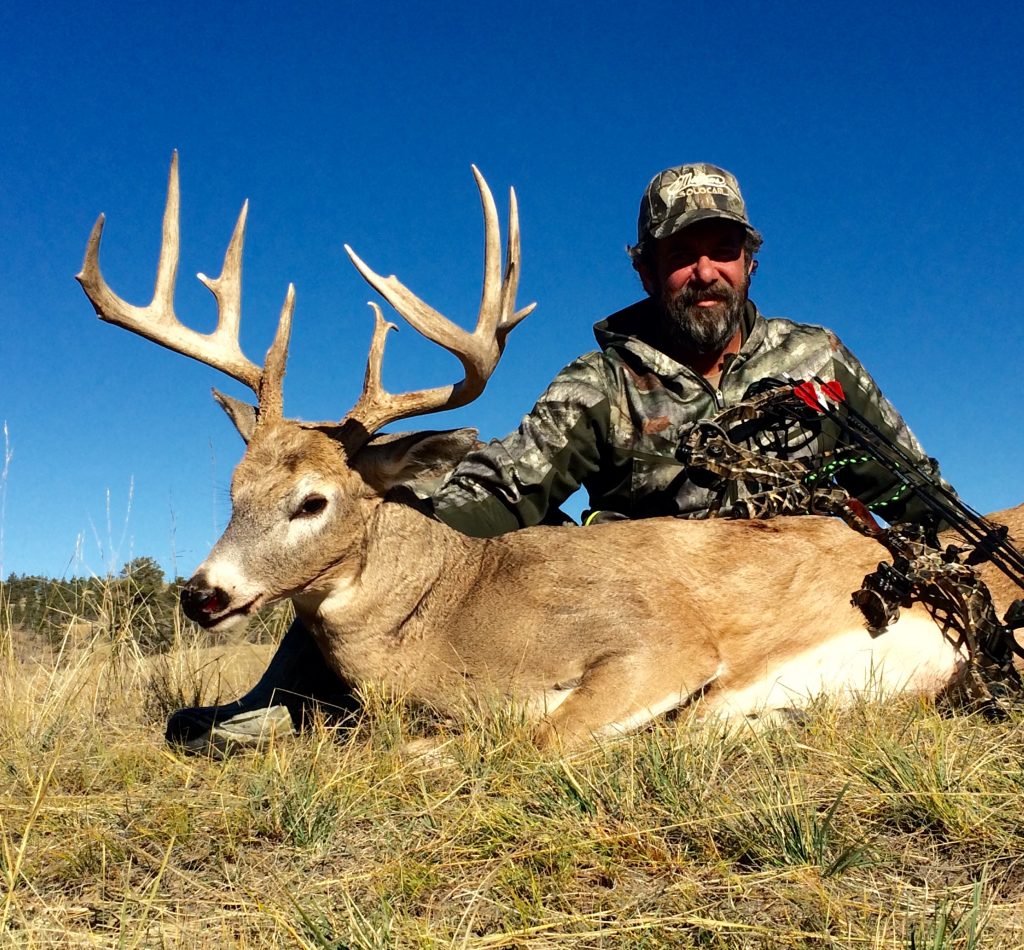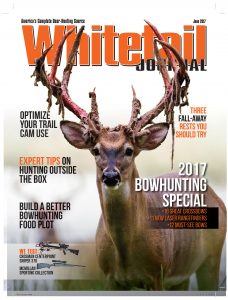Ten percent of the fishermen, the saying goes, catch 90 percent of the fish. The same could be said of bowhunters. Sure, most of us kill a few deer now, and then, if Lady Luck smiles, we might even tag a bruiser. A handful of others, however, kill big bucks year after year.
They aren’t lucky, though. They possess a sixth sense that many of us will never have. They always seem to be in the right place at the right time. Most of all, these men and women don’t hunt the way most of us do. They go to extremes and take chances. They do things a little different and pay close attention to subtle details most of us never see. And they put it all into motion when deer season opens.
Sit, Stay
Who doesn’t like to see new scenery? Sit in the same tree and stare at the same ground for a few days and you’ll probably want to move, too. Don’t, says Kansas outfitter and lifelong bowhunter Gene Pearcy. For him, the key to killing big bucks during the rut is patience combined with some old-fashioned, every-day deer hunting common sense.
“Big bucks don’t come by a single spot every day or even every three or four days. During the rut, they move a lot, so it can be a week or even two before that buck comes back around, but they will come back around if they haven’t been spooked,” says Pearcy.
As an outfitter, Pearcy finds himself coaxing his clients to stick it out for another day. Most, including a client who hunted a single stand for five straight days, wanted to move.
“He said he’d come back to the stand on the seventh day, but he wanted to go somewhere else, so I moved him. When he was in that other stand, I pulled the card on the trail camera that afternoon. The 190-inch buck I’d been getting on that camera was 15 yards from the stand he wasn’t hunting,” recalls Pearcy.
How long? Pearcy won’t hesitate to sit in one particular spot for up to 14 days — all day long. If a buck he’s captured on trail camera in that spot hasn’t shown up by that point, there’s a good chance it is either dead or been spooked. Mature bucks are typically reluctant to come back to that spot in the daytime if they’ve been bumped.
The key to sticking it out in one spot is playing the wind. Pearcy won’t hunt a stand if the wind is wrong. However, he’ll stay in the same area in hopes of seeing a particular buck.
“I like to have three or four stands in one small area so I can move based on the wind while staying after the same buck,” he says.
Few of us can dedicate that much time, at least not in a single block, but Pearcy says the most successful trophy-class deer hunters do everything they can to stay in a tree. That includes even if it means burning vacation days and skipping the occasional family function.
Related: Building a Better Bowhunting Plot
Don’t Hunt
Taking time off to hunt means you should hunt, right? Not necessarily, says Iowa resident and Mossy Oak pro-staffer Steve Stoltz. Instead of sitting in a stand all day every day, Stoltz pays close attention to various weather-related factors before he climbs into a tree. Sometimes, he goes days or even weeks before he hunts a particular spot.
“A lot of guys hunt the same few stands day after day without paying much attention to the conditions. All they’re doing is burning that spot out. I’ve learned to let a stand rest and to only go when everything is just right. You may only see a buck once and if the wind is wrong or something else isn’t just right, you’ll blow your chance and probably never see him again,” he says.

Stoltz never saw this buck in person until it was under his tree stand. He relies on trail cam photos and field observations to pattern bucks then pinpoints weather conditions to determine when to hunt.
Stoltz knows exactly when to hunt a particular buck based on observations, scouting and lots of trail camera work during the previous season and prior to the upcoming season. He’s learned that undisturbed mature bucks can be fairly predictable, especially during the early bow season and during the late season, as long as they don’t get pushed around. What they do on a particular day last year is often exactly what they’ll do the next year under similar conditions. That’s why he uses previous scouting information to hunt specific bucks.
“I pay close attention to every little detail — temperature, wind direction, upcoming weather patterns, barometric pressure, moon phase, you name it, before I climb into a tree. Only when everything is identical to the conditions the last time I saw that buck will I hunt it,” he says.
In other words, if Stoltz captured a good buck entering a field at 4 p.m. during an extreme cold spell on a waxing crescent moon and a northwestern wind, he’ll wait until he’s got similar conditions before hunting that spot. That could mean he won’t hunt a spot for a month or maybe even a year.
“It’s tough to sit out a few days, but if you really want to shoot bigger-than-average bucks, you sometimes have to wait,” he says.
Use The Crowds
The growth in interest in conventional compound archery hunting and the exponential growth in crossbows has led to an equally high growth in hunting pressure on public land. As such, public lands can be downright crowded.
For Virginia resident and sales and marketing specialist Bucky Hauser, all that additional hunting pressure isn’t necessarily bad. In fact, he uses it to his advantage.
“The vast majority of hunters don’t walk more than a ¼ mile from their trucks,” says Hauser. “I find places that are as far back in as I can get and that require the most work to get to.”
Distance helps, but he also studies topo maps and spends lots of time on the ground looking for other barriers. Mountains, creeks, swamps and other physical obstacles don’t keep deer out, but they most certainly keep all but the most determined bowhunters at bay. “Deer learn to avoid that pressure pretty quick, and mature bucks will seek out areas where they don’t get disturbed,” says Hauser.
It isn’t just distance and physical barriers that he looks for. During the season, Hauser will drive roads that cut through and around public hunting areas to search for concentrations of vehicles. “I look for areas where everyone else is parking as a good indication of where hunting pressure is concentrated,” he says.
Hauser starts scouting by hitting the woods immediately after the season ends. He sets out numerous cellular-linked trail cameras that send photos and videos directly to his cell phone. “I can scout without having to walk in so far to pull the memory cards. That not only saves me time, it doesn’t spook deer,” says Hauser. When he finds something he likes, the 45-year-old lifelong bowhunter will get to the spot well before daylight and stay all day. He sees some of the biggest bucks between 10 a.m. and 3 p.m., when most hunters are out of the woods or up and walking around.

Work a little harder on public land. While most hunters stay closer to roads, Hauser will hike deep into areas refuge bucks use when they get bumped around.
Get In Tight
We’ve all been told to hunt somewhere between feeding and bedding areas, but to kill a mature buck, Arkansas resident Chris Parrish likes to get right next to or even smack in the middle of a bedding area.
“Big, mature bucks don’t move much during daylight unless they are trailing a doe,” says Parrish. “You really have to take a chance and get right up close to where you’ll see them on their feet in the last 20 or 30 minutes of legal shooting light.”
The two best times to do that are during the October lull when bucks seem to lay low right before the rut and during the post-rut period when bucks are recovering. That’s when they spend the most of their time in their core home range, making them easier to locate and pattern.
What’s more, Parrish will wait until conditions are perfect. He likes an approaching cold front, particularly one where the wind changes direction. That will get a buck up on his feet for a brief period as it shifts bedding locations. It might also get them headed to food a little earlier.
“At most, you’ll get three or four chances before that buck figures out what’s going on, so make sure the wind is right. Nothing is more important than hunting a perfect wind to make sure the buck doesn’t know you are there,” says Parrish. “It’s real important to get in and out undetected, too. I’ll walk a mile sometimes to get in the right spot if I have to.”
If you can’t locate a bedding area during the season, wait until right after it closes and start walking, suggests Parrish. He uses satellite photos and topo maps to find thicker cover, particularly on higher spots, prime bedding areas for mature bucks. Once he locates likely areas, he’ll hang a stand so deer get used to it.
Related: Myth Busting 6 Common Game Management Practices
The Late Shift
It’s brutal cold, you haven’t seen a good buck in weeks and the season is winding down. What do you do? If your name is Chris Kossmeyer, you get your butt into a tree. For him, there’s no better time to chase mature whitetails than in the last few days of the season, especially if a bitter cold front has settled in.
“A lot of guys just give up and don’t hunt the last few weeks, but as far as I’m concerned, there’s no better time to target mature bucks. That’s when I get most excited about deer hunting,” says the northern Missouri resident. “They can be extremely predictable and there’s hardly anyone else out in the woods, so the bucks are more willing to move during the daytime.”

Kossmeyer likes weather conditions as bad as they come. When everyone else cowers insider, he's braving the cold, snow, wind and sleet.
The key, he says, centers around brutally-cold weather and a high-quality food source. Kossmeyer favors corn or beans, but he says turnips are a great alternative if grains are not an available option.
“If it’s not cold, the older bucks won’t come to a food source until after dark, but if it’s really cold, they have to eat and they are often the first ones in a field,” he adds.
That’s because those deer have spent upwards of six weeks undergoing some dramatic physiological changes, not to mention two or three weeks of physically-demanding rutting activity. When it’s all over, they need to feed. Kossmeyer says the drive for food will often overpower their senses and pull them out of thick cover during daylight hours.
“I go only when conditions are right. I like a significant drop in temperature where it’s in the teens or lower, but it needs to be stable. It’s also critical to hunt a food source when the wind is favorable,” he says. “They may need to feed, but they still have survival instincts.”
It’s An Obsession
There’s a common theme among all five experts, one that is lost on many dedicated bowhunters. These guys don’t just love to bowhunt, they live for it. They don’t plan their hunting around their jobs and families, they plan their lives around hunting. It’s a 24/7 obsession that involves everything from post-season scouting, year-round camera monitoring and habitat work. They eat, sleep, breathe and dream mature deer. Above all, they hunt beyond the normal limits and do what 90 percent of us don’t — they think outside the box.
Featured image: iStock







